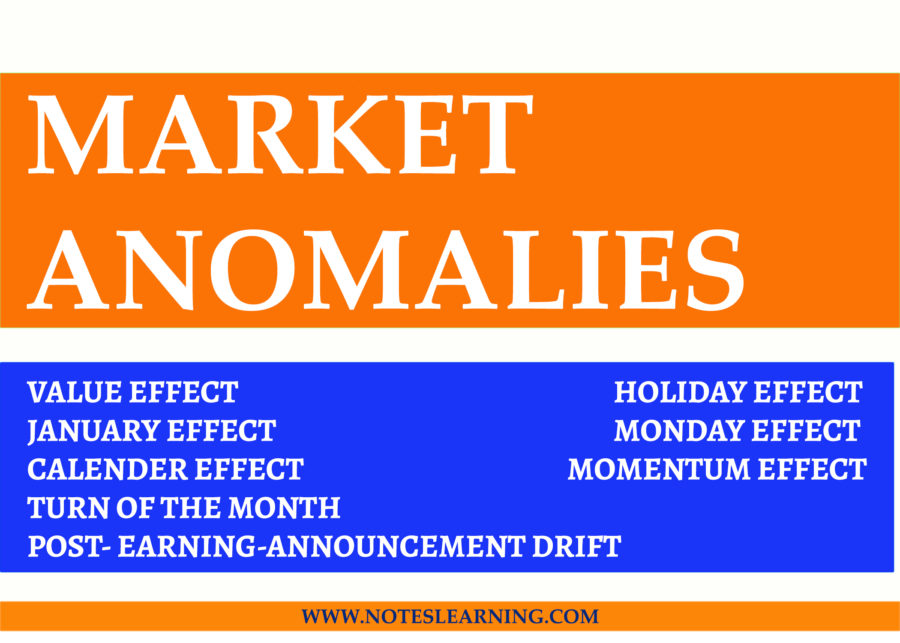Introduction
A market anomaly is a price action that contradicts the expected behavior of the stock market. Traders and investors can use these unusual market behaviors to find opportunities throughout the stock market.
A market anomaly refers to the difference in a stock’s performance from its assumed price trajectory, as set out by the efficient market hypothesis (EMH). EMH assumes that share prices reflect all of the information available at any given time. In theory, this should make it impossible to purchase overvalued stocks, or sell a stock above its value, because it would always trade at a fair market price.
But, in practice, efficient markets are difficult to create and even more difficult to maintain. The appearance of financial market anomalies provides evidence that the EMH doesn’t always hold true, as not all relevant information is priced in straight away or at all.
Calendar effects
Calendar effects are a group of anomalies that occur at particular times or on particular dates throughout the year. They are:
Monday effect
The Monday effect, also known as the ‘weekend effect’, is the tendency of stock prices to close lower on Mondays than on the previous Friday.
Many supporters of behavioral finance speculate that the Monday effect is caused by negativity surrounding a new working week. But others believe that a more likely explanation of the weekend effect is that companies often release bad news on Friday evenings, after the market has closed. This would be supported by the tendency of investors to sell off their stocks on Friday afternoons to avoid slippage over the weekend.
Turn-of-the-month
Turn-of-the-month refers to the pattern of a stock’s value rising on the last day of each trading month, with the price momentum continuing for the first three days of the next month.
Historically, the out-sized gains at the turn of each month have a higher combined return than all 30 days in the month. There is little agreement about whether this is just a coincidence of random behavior, or the result of positive business news being more likely to be announced at the end of the month.
January effect
The January effect describes the pattern of increased trading volume, and subsequently higher share prices, in the last week of December and the first few weeks of January.
While it is also known as the turn-of-the-year effect, the term ‘January anomaly’ is more commonly used to refer to the tendency of small-company stocks to outperform the market in the first two to three weeks of January.
It is believed that the January effect is caused by the turn of the tax calendar. According to this theory, prices drop in December when investors sell off their assets in order to realise capital gains. And, the increases in January are caused by traders rushing back into the market.
Holiday effect
The holiday effect, or per-holiday effect, is a calendar anomaly that describes the tendency for the stock market to gain on the final trading day before a public holiday.
The most frequently cited explanation for this is that people are naturally more optimistic around holidays, which can translate into positive market movement. An alternative explanation is that short-sellers are more likely to close their positions prior to holidays.
The holiday anomaly can also be attributed to expectations that there will be volatility at these times – the holiday effect becomes self-fulfilling, as traders buy or sell around the same historical anomalies.
Want to practice trading calendar effects? Create a demo account to trade in a risk-free environment.
Post-earnings-announcement drift
The post-earnings-announcement drift is the name given to the pattern of stock returns continuing to move in the direction of surprise earnings. This anomaly follows a company announcement and is caused by the market gradually adjusting to new information.
In theory, if markets were entirely efficient, then company earnings announcements would cause an immediate shift in prices as the report is instantly factored into the market price. However, in practice, it can take up to approximately 60 days for markets to adjust – with a positive earnings announcement causing an upward drift, and a negative earnings announcement causing a negative earnings drift.
The most widely accepted reason for this delay is that markets under-react to earnings reports, and so it takes a period of time before the information gets absorbed into the stock’s price.
Momentum effect
The momentum effect is based on historical technical analysis that suggests recent stock market ‘winners’ are more likely to continue to outperform the ‘losers’ – or that stocks with a strong upward trajectory are likely to continue to rise in the short to medium-term.
The momentum anomaly suggests that traders can take advantage of these price movements by going long on winners and shorting the losers.
One of the popular explanations for the momentum effect is that markets do not immediately price in new information, but do so more gradually.
Let’s say a company releases good news, but buyers under-react and take a while to flood the market, the price increase would be more gradual. This makes it appear that the winners are taking consistent gains.
Value effect
Perhaps one of the most well-known fundamental anomalies is the value effect. This anomaly refers to the tendency of stocks with below-average balance sheets to outperform growth stocks on the market, due to investor belief in companies’ potential.
Normally, if the market value is higher than the book value per share, a stock is considered overvalued, while a stock with higher book value than market value is often thought of as undervalued. While this would usually prompt the market to correct, the value effect sees traders behaving counter to accepted practice and buying shares that are technically overvalued.
Although there is increased risk in investing in low-book-value stocks – as they could fall into financial distress – it is weighed up against the potential for superior returns.


